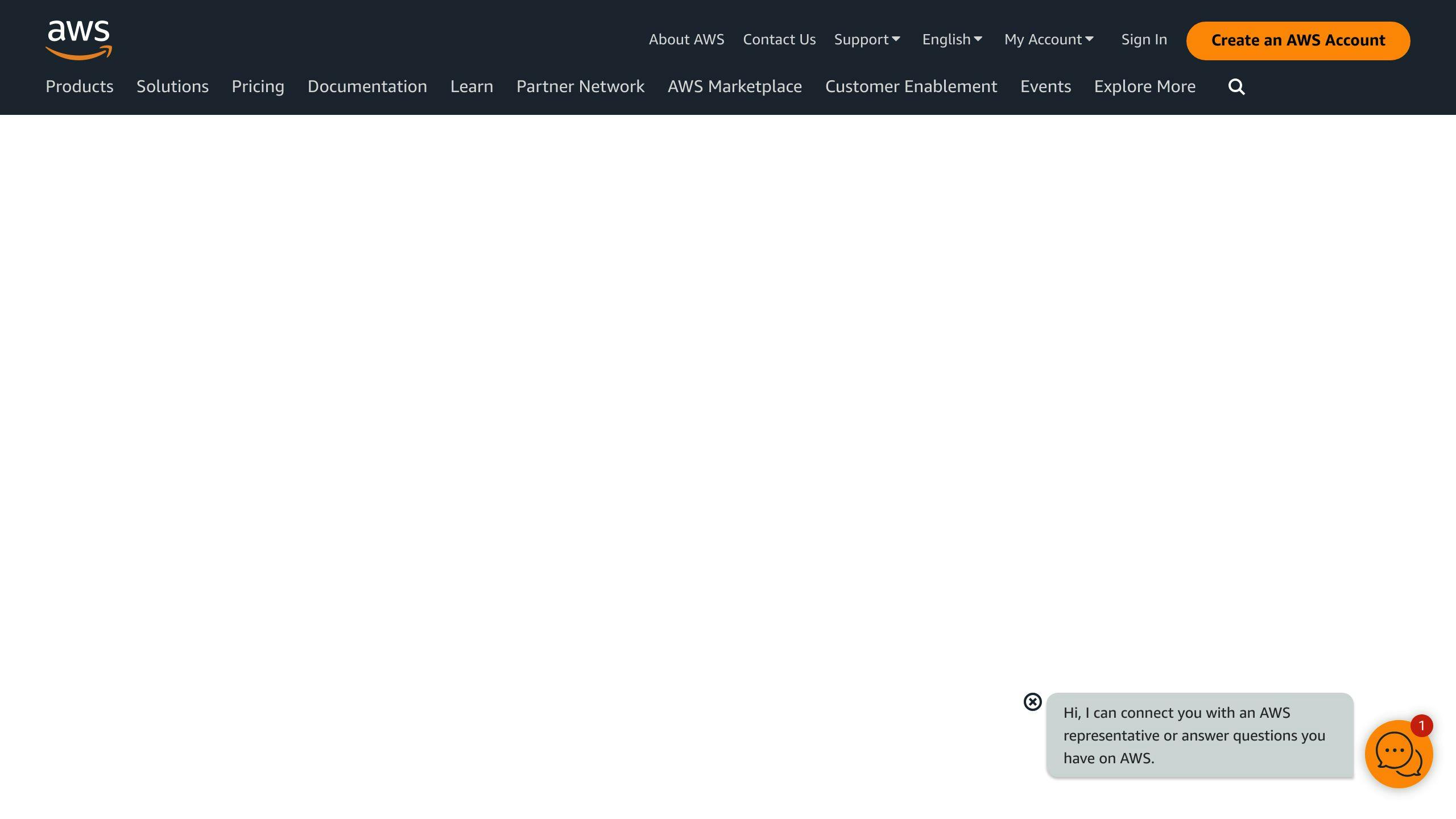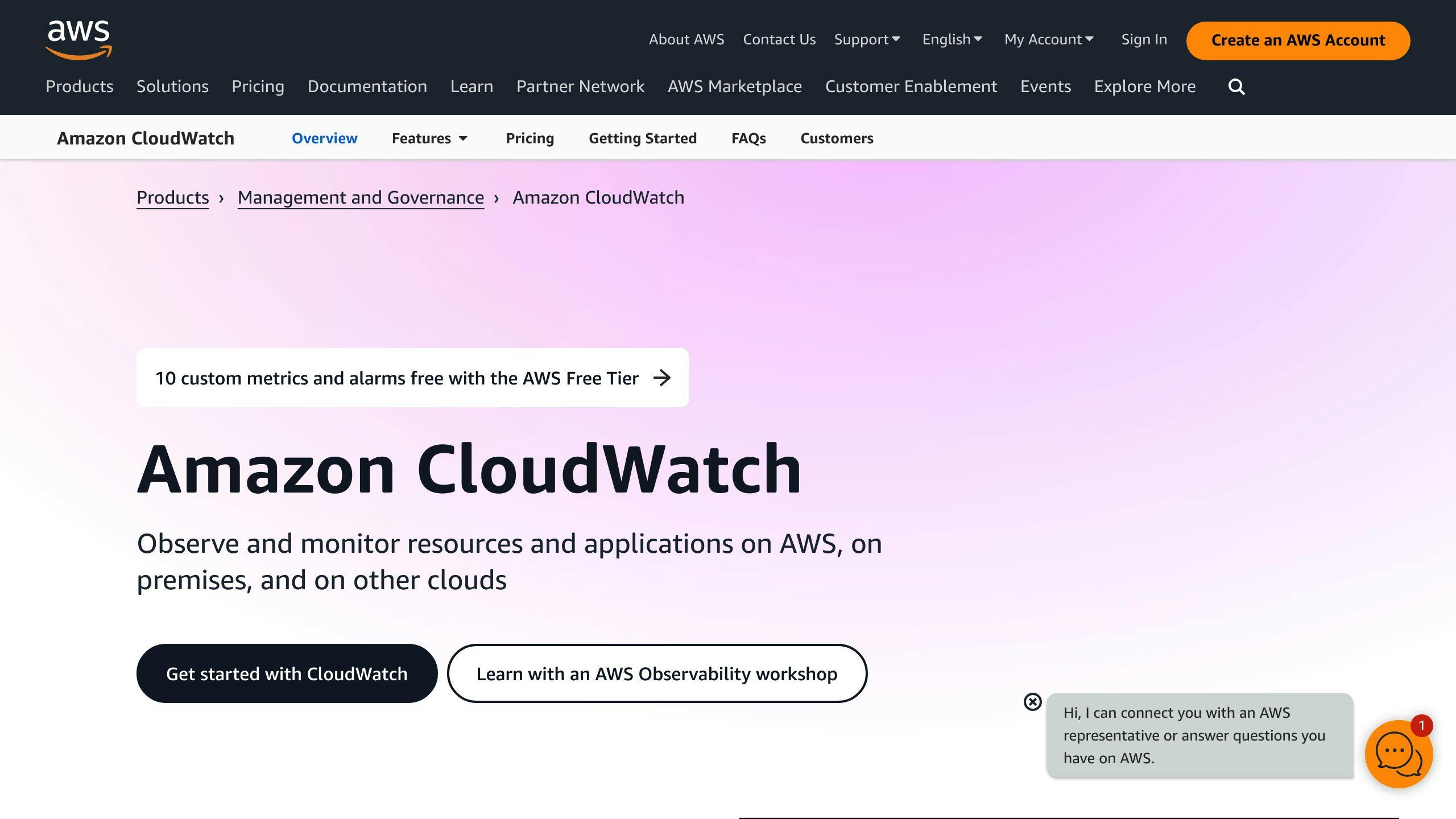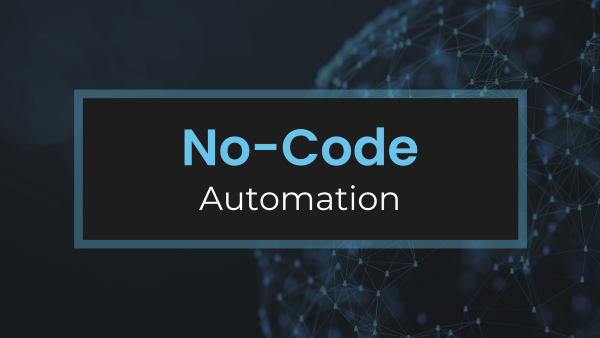Serverless real-time analytics allows you to process data instantly without managing servers. It combines serverless computing (no server management) and real-time analytics (processing data as it arrives).
Related video from YouTube
Key Benefits:
- Faster insights by processing data instantly
- Cost savings by eliminating server management
- Scalability to handle large data volumes
- Better decisions using real-time data
Steps Covered:
- Requirements: AWS services (Kinesis, Lambda, S3, DynamoDB, Elasticsearch) and tools (AWS CLI, SAM CLI, Docker)
- Setup: Creating IAM roles, Kinesis Data Streams, S3 buckets, DynamoDB tables
- Data Ingestion: Methods to ingest data into Kinesis Data Streams
- Data Processing: Using AWS Lambda for real-time data processing
- Data Storage: Choosing the right storage solution (DynamoDB, Redshift, Athena)
- Data Visualization: Integrating with visualization tools (QuickSight, Grafana, Tableau)
- Security: Best practices for securing your application (IAM roles, encryption)
- Monitoring: Using AWS CloudWatch for monitoring and logging
- Cost Optimization: Techniques to save costs (right-sizing, design patterns)
This guide covers setting up a scalable, cost-effective, and high-performance serverless real-time analytics solution on AWS. It walks you through the key steps, from ingesting data to visualizing insights, while ensuring security, monitoring, and cost optimization.
Requirements
To set up a serverless real-time analytics platform, you'll need the following AWS services and tools:
AWS Services

ServicePurposeAmazon Kinesis Data StreamsData ingestionAWS LambdaServerless data processingAmazon S3Durable storageAmazon DynamoDBReal-time data accessAmazon Elasticsearch ServiceSearch and analytics
Tools
ToolPurposeAWS CLIManaging AWS servicesSAM CLIBuilding and deploying serverless applicationsDocker (optional)Containerization
Programming Knowledge
- Familiarity with Python, Java, or Node.js
- Understanding of serverless computing concepts and AWS services
Additional Software or Dependencies
- AWS SDKs for your chosen programming language
- Any additional libraries or dependencies required for your specific use case
Note: Ensure you have the necessary permissions and access to create and manage AWS resources.
Setting Up the AWS Environment
To set up the AWS environment for your serverless real-time analytics platform, follow these steps:
Create an IAM Role
Create an IAM role for your AWS Lambda function to access other AWS services. This role should have permissions to read from Amazon Kinesis Data Streams, write to Amazon S3, and access Amazon DynamoDB.
Create an Amazon Kinesis Data Stream
Set up an Amazon Kinesis Data Stream to ingest data from your data producers. Configure the stream with the necessary number of shards based on your expected data volume.
Create an Amazon S3 Bucket

Create an Amazon S3 bucket to store your processed data. This bucket will serve as a durable storage solution for your analytics platform.
Create an Amazon DynamoDB Table

Set up an Amazon DynamoDB table to provide real-time access to your processed data. This table will store and retrieve data quickly and efficiently.
Deploy Your Serverless Application
Deploy your serverless application using AWS SAM or CDK. This will create the necessary AWS resources, including your AWS Lambda function, Amazon Kinesis Data Stream, Amazon S3 bucket, and Amazon DynamoDB table.
Ingesting Data
Ingesting data is a key step in building a serverless real-time analytics platform. Here, we will look at how to ingest data into Amazon Kinesis Data Streams, a service that helps you collect, process, and analyze real-time data.
You can ingest data into Kinesis Data Streams using various methods, including the AWS CLI, SDKs, and the Kinesis Producer Library. Each method has its own advantages and disadvantages.
Ingestion Method Comparison
MethodProsConsAWS CLIEasy to use, flexibleLimited scalability, not suitable for high-volume data ingestionSDKsProgrammable, scalableRequires coding skills, may need extra infrastructureKinesis Producer LibraryHigh-performance, scalableNeeds extra infrastructure, may need coding skills
When choosing an ingestion method, consider the volume and speed of your data, as well as your team's technical skills. For example, if you need to ingest large volumes of data quickly, the Kinesis Producer Library may be the best choice. If you need a simple, flexible solution, the AWS CLI may be more suitable.
In the next section, we will discuss how to process data streams in real-time using AWS Lambda and Amazon Kinesis Data Analytics.
Processing Data Streams
Processing data streams in real-time is a key step in building a serverless real-time analytics platform. Here, we will look at how to set up AWS Lambda functions as event sources for Kinesis Data Streams, implement business logic for data transformation, and handle errors and retries.
Configuring Lambda Functions as Event Sources
To process data streams in real-time, configure an AWS Lambda function as an event source for your Kinesis Data Stream. This setup allows the Lambda function to trigger automatically when new data arrives in the stream. The function can then process the data in real-time, transforming and enriching it as needed.
Implementing Business Logic
When implementing business logic for data transformation and enrichment, consider the specific needs of your use case. This may involve:
- Filtering out irrelevant data
- Aggregating data
- Performing complex calculations
You can use AWS Lambda's support for Node.js, Python, or Java to write your business logic.
Error Handling and Retries
Error handling and retries are important in serverless stream processing. If an error occurs, you need to ensure that the data is not lost and that the process can recover. AWS Lambda provides built-in support for error handling and retries, allowing you to configure the number of retries and the retry interval.
Here is an example of how you can implement error handling and retries in a Lambda function:
import boto3
def lambda_handler(event, context):
try:
# Process the data stream
process_data(event)
except Exception as e:
# Handle the error and retry
print(f"Error: {e}")
context.retry()
In this example, the Lambda function tries to process the data stream. If an error occurs, the function catches the exception, logs the error, and retries the processing using the context.retry() method.
sbb-itb-8abf120
Storing and Analyzing Data
Storing and analyzing data is a key step in building a serverless real-time analytics platform. After processing data streams, you need to store the processed data in a suitable storage solution and analyze it to gain insights.
Storage Solution Comparison
When choosing a storage solution, consider the specific needs of your use case. Here's a comparison of popular storage solutions:
Storage SolutionAdvantagesDisadvantagesUse CasesDynamoDBHigh performance, scalable, low latencyLimited querying capabilities, expensive for large datasetsReal-time analytics, IoT data processingAmazon RedshiftFast querying, supports complex analytics, scalableRequires data warehousing expertise, expensive for large datasetsData warehousing, business intelligenceAmazon AthenaFast querying, serverless, cost-effectiveLimited data processing capabilities, not suitable for real-time analyticsAd-hoc analytics, data exploration
When selecting a storage solution, consider factors such as data volume, querying needs, and cost. For example, if you need to perform complex analytics on large datasets, Amazon Redshift may be a suitable choice. If you require fast querying and cost-effectiveness, Amazon Athena may be a better option.
Once you've chosen a storage solution, you can analyze the stored data using SQL or NoSQL queries. This enables you to gain insights into your data, identify trends, and make data-driven decisions.
In the next section, we'll look at how to visualize and report data to stakeholders.
Visualizing and Reporting Data
Visualizing and reporting data is a key step in building a serverless real-time analytics platform. After storing and analyzing data, you need to present insights to stakeholders clearly and actionably.
Integrating with Visualization Tools
To create interactive dashboards and reports, integrate your serverless analytics solution with tools like Amazon QuickSight, Grafana, or Tableau. These tools offer features for data exploration, visualization, and reporting.
For example, Amazon QuickSight can connect to your storage solution, create visualizations, and publish dashboards. Its fast query performance and scalability make it suitable for real-time analytics.
Creating Dashboards and Reports
When creating dashboards and reports, follow these best practices:
- Keep it simple: Use clear visualizations and labels.
- Focus on key metrics: Highlight important metrics and KPIs.
- Use real-time data: Ensure dashboards and reports reflect the latest data.
Configuring Alerts and Notifications
To keep stakeholders informed of critical events or threshold breaches, set up alerts and notifications based on defined conditions. For example, you can set up alerts for unusual spikes in website traffic or notifications for changes in the sales pipeline.
Monitoring and Logging
Monitoring and logging are key parts of a serverless real-time analytics platform. They help you track performance, find issues, and fix problems quickly. In this section, we'll see how to use AWS CloudWatch for monitoring and log management.
Monitoring Serverless Components with AWS CloudWatch

AWS CloudWatch gives you a unified view of your AWS resources and applications. It helps you monitor performance, latency, and errors. For serverless applications, CloudWatch provides metrics for Lambda functions, API Gateway, and other services.
Best Practices for Monitoring with CloudWatch:
- Track Key Metrics: Monitor metrics like invocation count, error rate, and latency.
- Set Alarms: Configure alarms to notify you of threshold breaches or anomalies.
- Use Dashboards: Create custom dashboards to visualize your metrics over time.
Configuring Log Aggregation and Analysis with CloudWatch Logs
CloudWatch Logs is a centralized service for collecting, storing, and analyzing log data from your AWS resources.
Best Practices for Log Management with CloudWatch Logs:
- Configure Log Groups: Organize your log data by application, service, or environment.
- Set Up Log Streams: Collect log data from your serverless components.
- Use Log Insights: Analyze and visualize your log data to find trends and patterns.
Securing the Application
Securing a serverless real-time analytics application is key to protecting sensitive data and preventing access by unauthorized users. Here, we'll cover best practices for securing your serverless application.
IAM Roles and Policies
AWS Identity and Access Management (IAM) helps manage access to your AWS resources. To secure your serverless application, create IAM roles and policies that define permissions and access levels for your Lambda functions, API Gateway, and other resources.
Best Practices for IAM Roles and Policies:
PracticeDescriptionUse Least Privilege AccessGrant only the necessary permissions to your Lambda functions and resources.Create Separate Roles for Each FunctionIsolate each function's permissions to prevent unauthorized access.Use Policy ConditionsDefine conditions to restrict access based on specific attributes, such as IP addresses or user identities.
Encrypting Data
Encrypting data at rest and in transit is crucial to protect sensitive information. AWS provides built-in encryption capabilities for serverless applications.
Best Practices for Encrypting Data:
PracticeDescriptionUse AWS Key Management Service (KMS)Manage encryption keys securely using KMS.Enable Encryption at RestEncrypt data stored in S3, DynamoDB, and other AWS services.Use SSL/TLS for Data in TransitEnsure secure communication between your application and AWS services.
Optimizing Costs
Optimizing costs is key to making your serverless real-time analytics efficient and cost-effective. This section covers how to monitor and analyze costs, use cost-saving techniques, and apply serverless-specific design patterns.
Monitoring and Analyzing Costs
AWS Cost Explorer helps you track your AWS spending. By regularly checking your costs, you can:
- Find underused resources and adjust them to save money
- Optimize Lambda function execution times and memory use
- Set data retention policies to lower storage costs
- Use reserved and spot instances to cut costs
Cost-Saving Techniques
Here are some ways to save costs in a serverless setup:
- Right-sizing resources: Match resources to actual usage, not peak demand.
- Optimizing Lambda functions: Reduce execution times and memory use.
- Data retention policies: Set data retention periods to lower storage costs.
- Serverless design patterns: Use event-driven architectures and microservices.
Serverless-Specific Design Patterns
These patterns help reduce resource use and take advantage of serverless scalability:
PatternDescriptionEvent-driven architecturesRespond to events instead of running constantly.MicroservicesBreak down applications into smaller, independent services.Request aggregationCombine requests to reduce the number of function calls.
Summary
This guide has covered the steps to set up a serverless real-time analytics platform on AWS. Using serverless technologies, you can build a scalable, cost-effective, and high-performance analytics solution that processes large data volumes in real-time.
Key Benefits
BenefitDescriptionScalabilityAutomatically handles large data volumes.Cost-EffectivenessPay only for what you use.Faster DeploymentQuickly set up and deploy.Real-Time ProcessingProcess data as it arrives.
Steps Covered
- Requirements: AWS services and tools needed.
- Setup: Creating IAM roles, Kinesis Data Streams, S3 buckets, and DynamoDB tables.
- Data Ingestion: Methods to ingest data into Kinesis Data Streams.
- Data Processing: Using AWS Lambda for real-time data processing.
- Data Storage: Choosing the right storage solution.
- Data Visualization: Integrating with visualization tools.
- Security: Best practices for securing your application.
- Monitoring: Using AWS CloudWatch for monitoring and logging.
- Cost Optimization: Techniques to save costs.
Next Steps
Consider additional use cases and improvements, such as:
- Integrating machine learning models
- Leveraging edge computing
- Implementing advanced data visualization tools
For more information, refer to AWS's official documentation and tutorials on serverless real-time analytics. Explore case studies from companies that have successfully implemented similar solutions.

.png)






